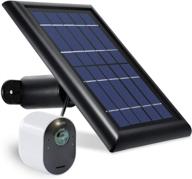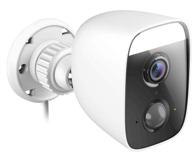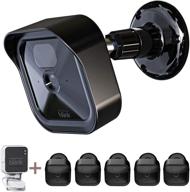
Review on Reolink Argus Pro: Wireless Outdoor Security Camera, Rechargeable Battery-Powered, 1080P HD Night Vision, 2-Way Talk, PIR Motion Sensor, Siren Alert, Cloud Storage/SD Socket Support by Devin Jirsa

Incredibly easy to set up and use
The simplest setup I have ever experienced in over 25 years of martial arts. 2 minutes for setup and you can watch the video on your smartphone from anywhere in the world. No need to mess around with a router, port forwarding, etc. No VCR, just this little white egg. The phone app is good and the windows client viewer is fine. It took a while to figure out that the Windows client software requires you to enter a UID because 'Locate Device on LAN' doesn't work on these cameras. But setting up a smartphone, which most people will use, is pretty darn easy and quick. These are peer 2 peer cameras. This makes them incredibly easy to set up and use. Unfortunately, P2P has a downside: there is a small potential security risk for your home network if a hacker gains access to your camera. The P2P setting punches a hole in your firewall and opens a port that could potentially be exploited. A strong password for your camera goes a long way towards security, but it's not 100% accurate. There are two security threats. First, it's obvious that someone who hacks into the system can see what your camera sees. Depending on what you're chasing, this may or may not be the worst thing in the world. Second, however, a hacker can access your camera's code, reprogram it, and turn it into a bot on your network to wreak havoc. This potential is certainly present in all P2P cameras. We, the consumers, will not be at all aware of the vulnerability of the individual systems. Don't try to put anyone off P2P cameras, just be aware and do a little research on how these things work. Many professionals who install cameras to make money strongly advise you not to use them due to security risks and there have been cases of hijacked P2P cameras in confidential installations. Of course, their warnings must be seen in the context of their business interests. Overall picture quality is very good, and you can choose between 1080p, 720p, or a lower resolution called "Fluent," which is still very good for a quick, basic view. and only uses about 200KB of bandwidth per second, which is ideal for weaker Wi-Fi signals, cameras far from your router, or if you've switched to 3G speeds. The 135 degree lens offers a wide viewing angle. night vision is good. The camera stays off until you open the app on your smartphone. At this point, the camera stays on for live view, snapshots, or video recording. When you turn off the screen of your smartphone, the camera immediately turns off in response. This is cool and highly predictable behavior. You can set motion detection sensitivity, low-middle-high level, and length of recording time after motion detection. Recordings are stored on the micro SIM card and can be downloaded at any time. With the Windows client open, you can take snapshots or recordings that will be saved directly to your PC's hard drive. And the best for last. NO WIRE. Seriously wireless. I have one in my flower bed right now and they are quite waterproof with a rubber boot. It looks like you could easily save a full battery for a month if there's not a lot of motion recording going on. I'll probably add a solar panel for some uses. It's not a perfect system, but if you're tired of buying new technology, playing around with it for hours or days, googling endlessly to figure out how to make something work, becoming a short-term expert on that thing, just um Forget almost everything you learned in 6 months when that thing stops working and you need to troubleshoot, this camera is for you.
- Battery operated. With a micro USB port and rechargeable battery, the Argus Pro can run standalone for up to 4-6 months or be charged with a 5V 2A universal power adapter or a Reolink solar panel for continuous power. (Power adapter and Reolink solar panels sold separately).
- A few little things
New products
Comments (0)
Top products in 👁️🗨️ Video Surveillance

Wasserstein Solar Panel 13 1Ft Compatible Camera & Photo and Video Surveillance

11 Review

📷 D-Link Outdoor Security Spotlight WiFi Camera with Day and Night Vision, Built-In Smart Home Hub, Full HD Surveillance Network System (DCS-8630LH-US) in White

12 Review

Blink Outdoor Camera Wall Mount Bracket Set - 5-Pack Plastic Protective Housing and 360° Adjustable Mount with Blink Sync Module 2 Outlet Mount - for Enhanced Blink Outdoor Indoor Camera System (Black)

11 Review

WOSODA Trail Camera: Waterproof 16MP 1080P Hunting Game Camera with Night Vision for Home Security & Wildlife Monitoring

11 Review






